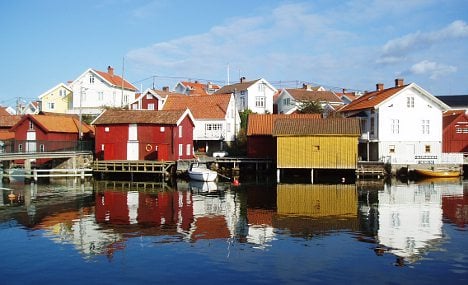Along with Germans, Danes and Dutch, Norwegians are among those most eager to own a slice of Swedish summer paradise.
Since 2007, Norwegian ownership of Swedish cottages has increased by nearly 35 percent, according to Statistics Sweden, and they now own around 9,000 cottages located in the land of their neighbours to the east.
This spike in interest makes Norwegians the fastest growing group of foreign summer home owners in Sweden.
“The number of holiday homes purchased by Norwegians has risen for the second year in a row, by seven percent. They are primarily coming to areas straddling the Norwegian border,” said Rein Billström of Statistics Sweden.
Last year, foreign ownership of summer houses in Sweden climbed by 2.9 percent compared to the previous year, according to figures from Statistics Sweden.
Overall, foreigners now own 35,045 Swedish summer homes and cabins, or about 6 percent of the overall stock.
Danes dominate the ranks of foreign owners of Swedish summer homes, with about 12,000 cottages now in the hands of people coming from Sweden's Scandinavian neighbour to the south.
The next largest group of foreign owners is Germans, who own around 10,000 cabins scattered throughout Sweden's vast wilderness.
The largest share of cabins owned by foreigners, 40 percent, is located in Kronoberg County in southern Sweden, and Värmland County in western Sweden, where 20 percent of foreign-owned cottages are located.
And in 20 of Sweden's 290 municipalities, at least one third of summer cottages are owned by non-Swedes with the list topped by Markaryd in southern Sweden, where 60.7 percent of the cabins are owned by foreigners.
However, Strömstad, situated by the Norwegian border in western Sweden, and Ljungby in southern Sweden have the highest actual number of foreign-owned cottages, with 1,279 and 1,174, respectively owned by non-Swedes.



 Please whitelist us to continue reading.
Please whitelist us to continue reading.
Member comments